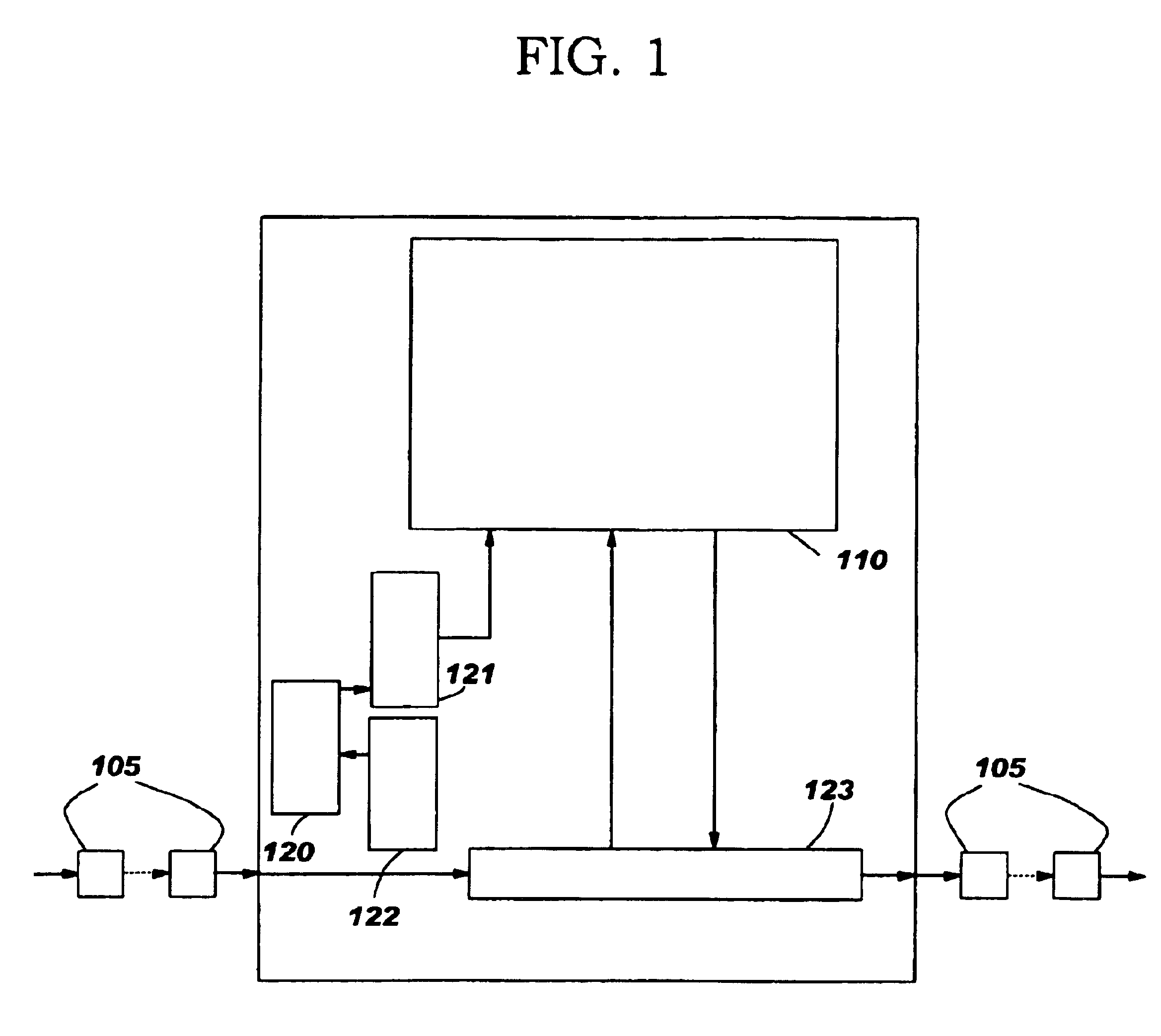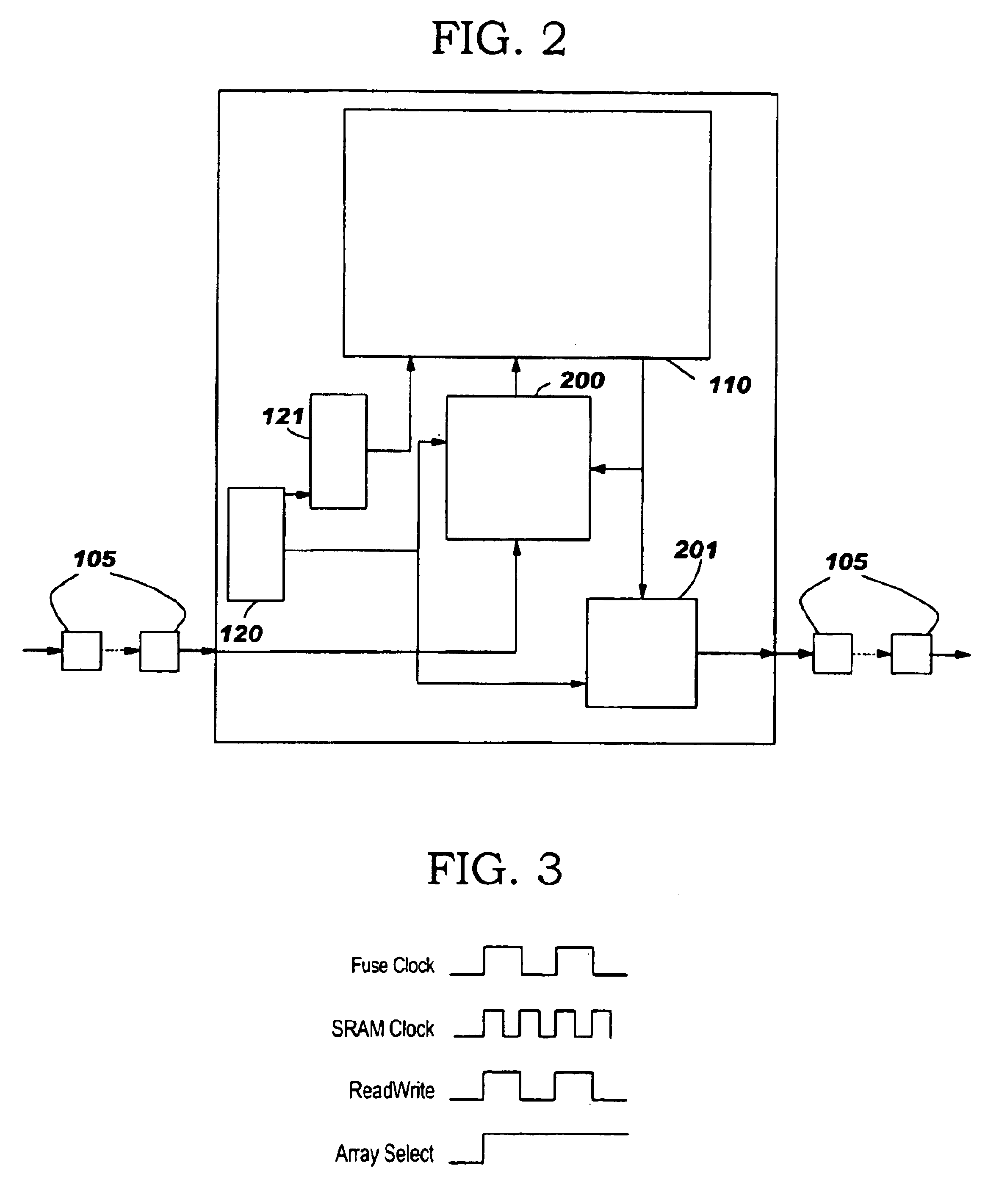Method and apparatus for implementing DRAM redundancy fuse latches using SRAM
a technology of redundancy and latches, applied in the field of storage of fuse information, can solve the problems of large space consumed by latches used to hold such information within the dram structure, and achieve the effect of great density and speed advantages
- Summary
- Abstract
- Description
- Claims
- Application Information
AI Technical Summary
Benefits of technology
Problems solved by technology
Method used
Image
Examples
Embodiment Construction
[0032]As mentioned previously, fuse information is traditionally loaded in a serial manner using scan paths connected between the fuse latches. In some applications a centralized location for fuse information latches is useful (redundancy information) or a reduced area dedicated to fuse information is desired. Instead of using scan latches, the invention stores the fuse information in SRAM.
[0033]One embodiment discussed herein is useful with stand alone DRAM. In this embodiment, a shift register accumulates fuse information until full, and then loads it into the SRAM. Fuse information loading starts and stops with the information for only that DRAM. However, the situation is different for DRAMs that are embedded within a scan chain. In such a situation, the fuse information serially flows down the scan chain before or after information intended for upstream and downstream devices / latches within the scan chain. Therefore, for DRAMs used in embedded applications, a problem arises beca...
PUM
 Login to View More
Login to View More Abstract
Description
Claims
Application Information
 Login to View More
Login to View More - R&D
- Intellectual Property
- Life Sciences
- Materials
- Tech Scout
- Unparalleled Data Quality
- Higher Quality Content
- 60% Fewer Hallucinations
Browse by: Latest US Patents, China's latest patents, Technical Efficacy Thesaurus, Application Domain, Technology Topic, Popular Technical Reports.
© 2025 PatSnap. All rights reserved.Legal|Privacy policy|Modern Slavery Act Transparency Statement|Sitemap|About US| Contact US: help@patsnap.com



